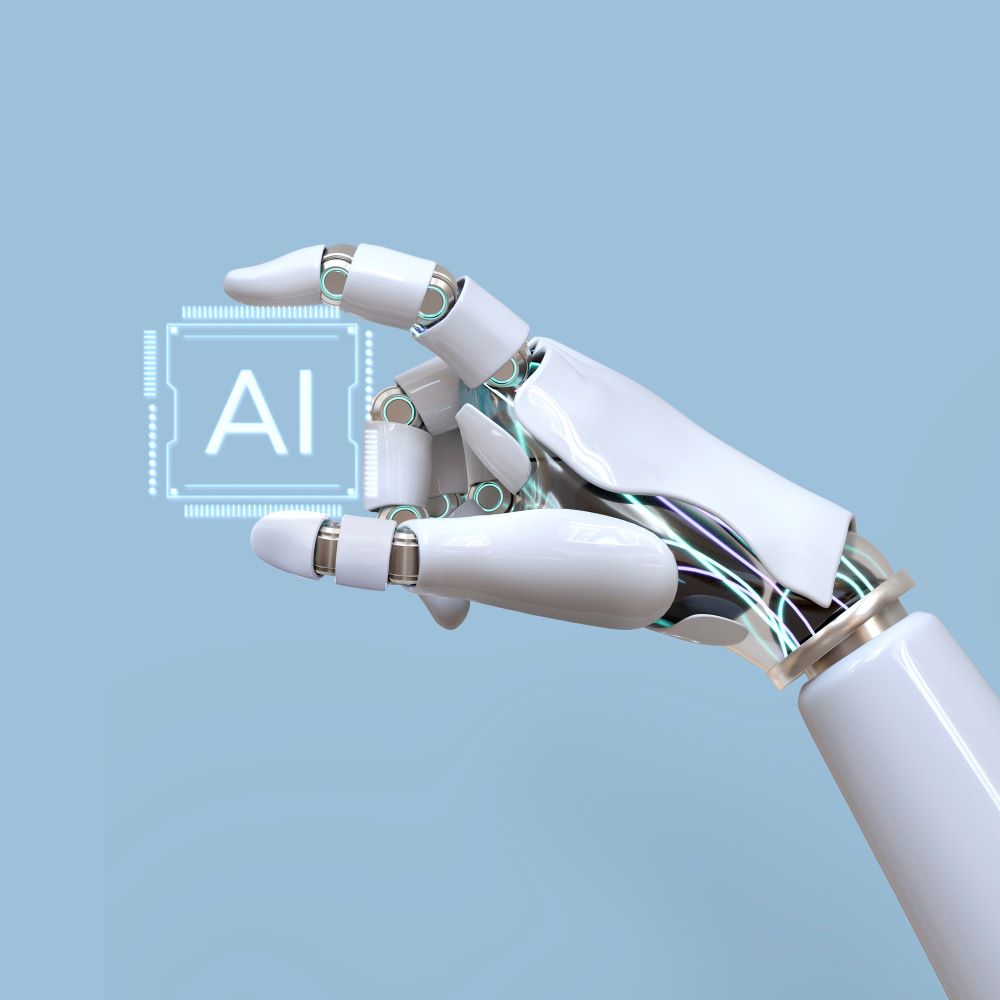As we move into 2025, the technological landscape continues to evolve at an unprecedented pace. Businesses and individuals alike must stay ahead of the curve to remain competitive in an increasingly digital world. Understanding emerging trends is not just an option; it’s a necessity. In this blog, we delve into the most impactful technology trends shaping the future and how they are redefining industries. With constant innovation at the forefront, companies must adopt a forward-thinking approach to remain relevant.
Artificial Intelligence and Machine Learning: Smarter Every Day
Artificial Intelligence (AI) and Machine Learning (ML) remain at the forefront of innovation. By 2025, the global AI market is expected to exceed $400 billion (Statista, 2024). AI’s ability to automate processes, personalize user experiences, and improve decision-making is revolutionizing fields such as healthcare, finance, and retail. AI’s applications continue to expand into unexpected domains, creating endless possibilities.
Example: E-commerce giants like Amazon use AI to analyze customer behavior, offering personalized recommendations that increase sales by 35%. Similarly, healthcare providers are employing AI-driven diagnostic tools to improve accuracy in detecting conditions like cancer, reducing error rates significantly.
Takeaway: Businesses must leverage AI tools to streamline operations and deliver better customer experiences. For example, platforms like ChatGPT enable cost-effective communication solutions that enhance efficiency. Furthermore, predictive analytics powered by AI allows businesses to anticipate customer needs and stay ahead of competitors.

Edge Computing: Processing Power at the Source
As the demand for real-time data processing grows, edge computing is becoming indispensable. By decentralizing data processing, edge computing reduces latency and enhances performance, particularly for Internet of Things (IoT) devices. This shift is critical as IoT adoption surges across industries.
According to Gartner, 80% of enterprise-generated data will be created and processed at the edge by 2025. This represents a shift in how businesses manage data-intensive operations.
Example: Autonomous vehicles rely on edge computing to process vast amounts of sensor data in real-time, ensuring safe navigation. Similarly, smart cities use edge devices to manage traffic flow and energy consumption efficiently, leading to more sustainable urban development.
Takeaway: Companies adopting edge computing can improve operational efficiency and reduce costs associated with centralized cloud infrastructure. This technology is especially relevant for industries requiring immediate responses, such as manufacturing, healthcare, and logistics.
The Rise of Generative AI
Generative AI tools like DALL-E, MidJourney, and advanced large language models are transforming creative industries. These technologies allow users to generate content, from art to code, with minimal input, fueling innovation in marketing, product design, and entertainment. As their sophistication grows, generative AI is entering new sectors.
Example: Brands like Coca-Cola have used generative AI to create unique ad campaigns that resonate with diverse audiences. Additionally, architecture firms are leveraging generative AI to conceptualize complex designs, saving time and reducing costs.
Takeaway: Companies investing in generative AI can gain a competitive edge by producing high-quality, tailored content at scale. This trend highlights the importance of adopting innovative tools to streamline creative processes.
Quantum Computing: Redefining Computational Limits
Quantum computing, once a futuristic concept, is rapidly becoming a reality. Tech giants such as IBM and Google are leading the race to build quantum computers capable of solving problems beyond the reach of traditional systems. The technology is poised to revolutionize industries with its unparalleled computational power.
By 2025, quantum advancements are expected to accelerate breakthroughs in cryptography, pharmaceuticals, and logistics. This represents a paradigm shift in problem-solving capabilities.
Example: Volkswagen utilized quantum algorithms to optimize traffic flow in Lisbon, reducing travel times significantly. Similarly, pharmaceutical companies are using quantum computing to develop drugs faster by simulating molecular interactions.
Takeaway: Businesses should stay informed about quantum developments to understand how they might disrupt current industry practices. While adoption may still be in its early stages, the potential for competitive advantage is immense.
You may also be interested – Human Resource Trends for 2025: Shaping the Future of Work

Sustainability Through Green Technology
With rising awareness of climate change, green technology is taking center stage. Companies are adopting energy-efficient systems and renewable energy sources to meet net-zero carbon goals. The integration of green tech is no longer optional but essential for long-term success.
Example: Google has committed to operating entirely on carbon-free energy by 2030. Similarly, startups are developing innovative solutions like biodegradable electronics and carbon capture technologies. In the automotive industry, companies like Tesla are revolutionizing transportation with sustainable electric vehicles.
Takeaway: Businesses prioritizing sustainability can enhance their reputation and reduce operational costs through eco-friendly innovations. Integrating green technology can also attract environmentally conscious customers, creating new market opportunities.
5G Expansion and Beyond
5G connectivity is transforming industries by enabling faster, more reliable communication. In 2025, 5G adoption is expected to facilitate advancements in augmented reality (AR), virtual reality (VR), and IoT ecosystems. The rise of 5G is fueling unprecedented innovation across multiple domains.
Example: Retailers like IKEA are using AR powered by 5G to offer immersive shopping experiences, allowing customers to visualize products in their homes. Similarly, telemedicine platforms are leveraging 5G to provide seamless remote consultations.
Takeaway: Businesses integrating 5G technology can deliver enhanced user experiences and expand their digital capabilities. From retail to healthcare, 5G is creating opportunities for innovation and growth.
Cybersecurity in an Era of Complexity
As technology evolves, so do the threats. Cybersecurity remains a top priority, with global spending projected to exceed $280 billion by 2025 (Cybersecurity Ventures, 2024). Companies must adopt advanced security measures to protect sensitive data. In a hyper-connected world, robust cybersecurity is vital.
Example: Multi-factor authentication and AI-driven threat detection are helping organizations like Microsoft safeguard user information. Additionally, blockchain technology is being used to secure transactions and prevent data breaches.
Takeaway: Investing in cybersecurity is essential to maintain trust and protect business assets in a connected world. Businesses must regularly update their security protocols to stay ahead of emerging threats.
Metaverse Momentum
The metaverse, a digital universe merging AR, VR, and blockchain, is gaining traction. By 2025, this industry is forecasted to surpass $1 trillion in value. The metaverse is redefining how people interact, work, and shop in digital spaces.
Example: Companies like Nike have launched virtual storefronts in the metaverse, providing immersive brand experiences. Similarly, real estate firms are using the metaverse to host virtual property tours, broadening accessibility for buyers.
Takeaway: Brands leveraging the metaverse can create innovative engagement channels to connect with tech-savvy audiences. Embracing this trend is critical for businesses targeting younger, digitally native demographics.

Automation and Robotics
Automation continues to redefine productivity, with robots performing tasks ranging from manufacturing to customer service. By 2025, the robotics market is set to grow by 30% year-over-year, underscoring its transformative potential.
Example: Amazon’s robotic warehouses improve delivery speed and inventory management, reducing operational costs significantly. In healthcare, robots are assisting in surgeries, providing precision and minimizing human error.
Takeaway: Companies adopting robotics can gain scalability advantages while reducing human error. Automation also opens opportunities to reallocate human labor toward more strategic tasks, enhancing overall productivity.
Conclusion
2025 promises to be a year of profound technological transformation. From AI and edge computing to the metaverse and green tech, staying ahead requires strategic adoption of emerging trends. Companies that embrace these innovations will not only thrive but lead the future. By focusing on sustainability, leveraging advancements in 5G, and integrating cutting-edge tools like generative AI, businesses can create lasting impact in their industries. Remaining adaptable and forward-thinking is key to navigating this exciting, ever-evolving digital era. Organizations that prioritize innovation will not only future-proof their operations but also set benchmarks for excellence in a competitive market.
Bibliography
- “Artificial Intelligence Market Size Worldwide.” 2024.
- “Edge Computing Predictions for 2025.” 2024.
- Cybersecurity Ventures. “Global Cybersecurity Spending Forecast.” 2024.
- “The Rise of Generative AI in Business.” 2024.
- World Economic Forum. “Quantum Computing Use Cases.” 2024.
- Google Sustainability Report. “Net-Zero Carbon Goals.” 2024.
- McKinsey & Company. “5G and Business Opportunities.” 2024.
- Harvard Business Review. “AI-Powered Customer Engagement Strategies.” 2024.







